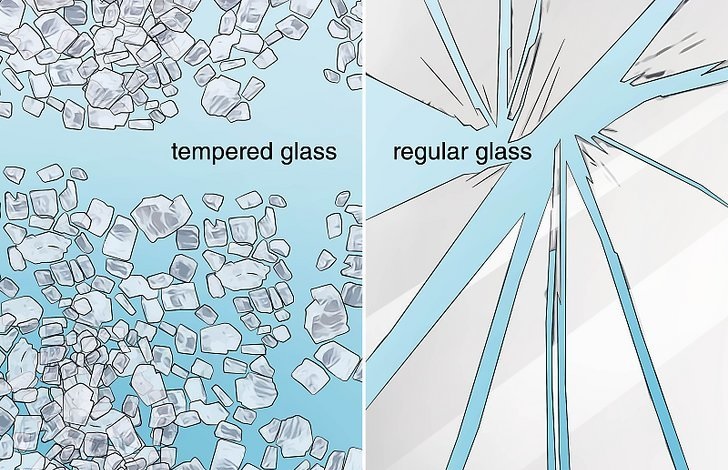Safety Glazing (Glass) is a complicated subject full of specific rules and many exceptions. This area of the IRC is difficult and inspectors debate minutiae. This article addresses the most common issues we see.
Hazardous locations require special glass that shatters instead of breaking into shards that are dangerous and can hurt people. Safety issues are so important that no matter when the house was built these items must be up to current code.
In general, an etched stamp with “CPSC 16 CFR 1201” or “ANSI Z97.1” must be seen on all safety glass. This designation cannot be removed. There are many different types of glass (laminated, fully tempered, heat strengthened, wired, etc.) but this etching assures inspectors that it meets the correct standards.
Hazardous Locations.
Hazardous locations are within 5 feet of wet locations, doors, and stairways. Within 5 feet of wet locations includes bathroom shower enclosures and windows as well as near pools and spas outside. The chance of people slipping in wet locations is understood. However, people can also slip on the stairs. Safety Glass must be installed when a window in a stairway is less than 36 inches above the walkway on any landing or step. That’s why newer homes tend to install high windows on the stairways. It was popular in the Seventies to have the stairs close to the front door, which created a hazardous area. If the glass is less than 36 inches high and within 60 inches of the bottom of the stairs, it must be safety glass. This protects people from additional injury if they fall down the stairs.
Doors.
Glass in doors, beside, and near doors can require safety ratings. Sliding glass doors and any glass in a door that allows a 3 inch sphere to pass must be safety rated. Windows within 2 feet of a door horizontally must be protected. This makes sense if a door is slammed or the area impacted, it is strengthened. A notable exception is if the door with glass leads into a closet or storage is less than 3 feet deep or is decorative glass. However, mirrored closet sliding doors must be safety glass.
Large Windows.
Large windows have to meet several conditions before they are required to be safety glass. They are most often seen in living rooms overlooking a large porch or patio with a pool. The single pane must be greater than 9 sf (3’ X 3’). The lower edge must be less than 18 inches high and the upper edge greater than 36 inches high and within 36 inches horizontally of a walking surface. Any horizontal area that is not guarded with a wall or rail can be a walking surface. If all these conditions are met, the window must be safety glass.
Child Safety.
Another safety issue relating to windows is child safety laws. Windows on a second story or above that are lower than 24 inches cannot raise more than 4 inches to prevent a toddler from falling out. A common design in older houses were tall operable windows that were only a few inches off the floor. After the death of several toddlers, a law was passed that required a railing, permanent locking mechanism, window guards, or limiting devices.
Inspecting for safety glass and child safety devices alerts clients to potential risks that they may not have noticed. While decorative glass like stained glass may be part of the exception due to the lead structure of it, inspecting these windows can still reveal cracks or safety issues. At Inspections of Texas, we attend classes regularly to stay current on codes and best practices. We put your safety first!

